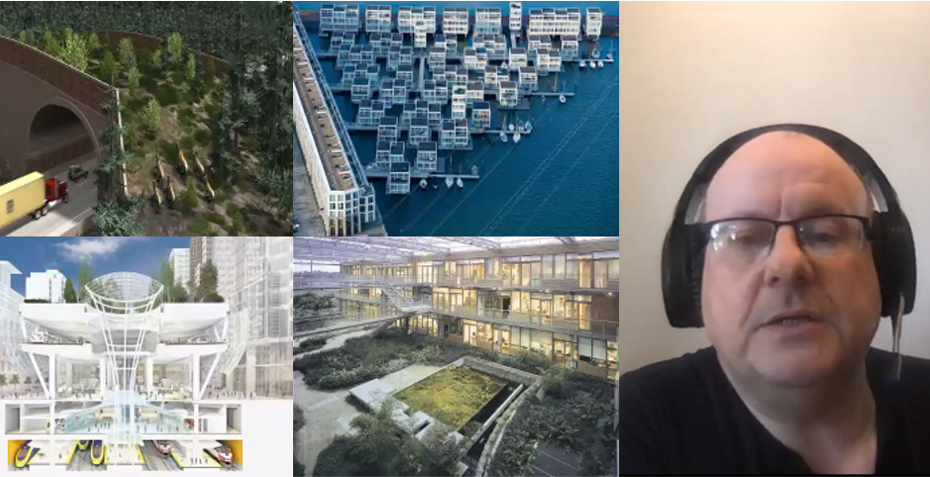“Just transition” may have been a new term for some attendees at the latest Cities@Tufts colloquium on Wednesday, October 14, but the movement associated with the phrase has a long history. The term was coined in the 1970s as a framework for a shift away from an extractive economy, while ensuring workers were not left behind in the change. The movement reemerged in the 2010s as discussions of Green New Deals and “green collar” economy began to gain traction.
The semester’s third colloquium featured guest speaker Damian White, the Dean of Liberal Arts at the Rhode Island School of Design. White joined the UEP community to discuss the role of urban designers in a labor-focused just transition. He began with an overview of the history of the just transition movement, before laying out the contradictions and opportunities within the just transition framework and their associated urban design requirements.
To start, White shared the strengths and weaknesses of the just transition framework as a model for future climate action. A key strength of the just transition model, White noted, was that it arose from the experience of frontline workers. “It is a discourse that emerged through struggle and campaigning, not just academia,” he said. Yet its roots are primarily in the global North and the energy sector, leading to blind spots when it comes to parts of the global economy where it has not been as widely embraced.
Despite its limits, White mentioned a range of groups who have used and adapted the just transition model, further enriching the discourse. For example, scholars like Nick Estes and Max Aji have pointed to the limitation of the just transition framework, since it is based on settler-colonial modes of social democracy. Others have made note of the gendered nature of work in a high-carbon economy, advancing the idea that caretaking and service work can be considered low-carbon jobs. These varied voices questioned whether the just transition model could account for these gaps and tensions as it continues to evolve.
“Design reveals a world that needs to be made and made and made again… It’s not the descent of eco-topia.”
Damian White, Dean of Liberal Arts, Rhode Island School of Design
The central thesis of White’s talk was that a just transition will necessarily involve a shift in material culture, infrastructure, and other urban forms that require designers’ involvement to realize. White proposed that designers’ roles are to imagine the vision of a just future and build it alongside political protesters and activists. “Design is not to be trusted,” White said. “However, post-carbon futures are not simply going to emerge through protest and policy shifts alone.”
While seeking inspiration for designers of today’s just transition movement, White realized that the history of design included philosophies that in fact centered labor. For example, William Morris’ “A Factory as it Might Be” and Ebenezer Howard’s ideal of Garden Cities both explored conceptions of cooperative work. Expanding on these philosophies, White brought up more recent additions to the discourse on labor-centered design. Socialist-feminist labor-oriented designs sought to make labor that occurs in the home central and visible in architecture and urban planning. Recent scholarship has also revealed the history of indigenous and gendered labor that often has been overlooked in design history centered on white male figureheads.
In summary, White says, “a much more expansive account of design can allow us to think about how design competencies have been enacted by people who were not formally understood as designers.”
White left the audience with a set of questions that open up more doors for research, exploration, and design ideation. “I think the questions are really about, ‘design by whom, with what social and ecological impacts, what modes of displacement, and what kinds of labor?'” By the end of the session, the audience were taking these ideas further with questions about how the just transition model might apply in their own research, work, and communities.
The next Cities@Tufts colloquium, “Intercultural Urbanism: Lessons from Prehistory,” takes place on October 21. Find the official event description here.
